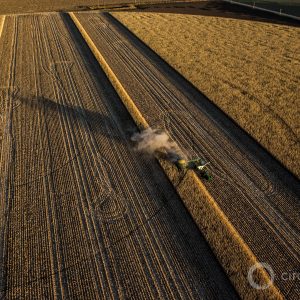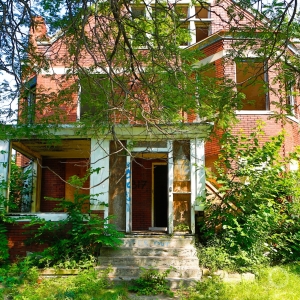The Stream, November 3, 2020: Typhoon Goni Slams Philippines, Misses Manila
YOUR GLOBAL RUNDOWN
- The fourth typhoon to hit the Philippines this month wreaks havoc on provinces south of the capital but spares Manila.
- Australia’s government is hoping to spread wastewater Covid-19 testing throughout the country.
- One of the oldest water battles in the United States is nearing its end.
- Experts say the Grand Ethiopian Renaissance Dam could be beneficial to Sudan.
Zimbabwe’s government launches a program to bring back a traditional method of agriculture that could help mitigate the country’s worsening water woes.
“I don’t have to worry about buying food (and) I don’t have to sell my livestock to buy food, like some people do during drought.” – Thokozile Ncube, a farmer in Zimbabwe’s drought-prone Matobo district. Ncube uses a traditional planting method known as “potholing,” where farmers plant crops in manure-filled holes covered with straw, The Daily News reports. Zimbabwe’s government has launched a program to bring back the technique, which keeps crops hydrated for longer than tilling and watering entire fields as drought continues to worsen in the country. The practice is a form of conservation agriculture, which saves water and produces fewer carbon emissions, according to climate experts. The government program is part of a plan to reach 1.8 million households by the end of the 2020-2021 farming season with seeds, fertilizer and training.
ELECTION DAY 2020
Take a look back on Circle of Blue’s coverage of the 2020 Election Season.
- 2020 Election: Water a Factor in Senate Race in Michigan
- 2020 Election: Water Decisions Pepper State and Local Ballots
- What Has the Trump Administration Meant for Water?
Typhoon Goni Slams Filipino Provinces, Spares Capital City
Almost a million people were evacuated in the Philippines prior to Typhoon Goni, which caused mudslides and flooding and has killed 20 as of Monday. The Guardian reports that provinces south of the capital were badly affected, like Catanduanes—where the Red Cross estimates that as many as nine in 10 homes in the city of Virac were damaged or destroyed. The typhoon, which was the fourth to hit the Philippines in the past month, has only added to public health and economic crises spurred by the Covid-19 pandemic.
Although the capital city of Manila was largely spared, The New York Times reports it may not stay that way for long. Scientists say the Philippines is one of the most at-risk countries on the planet for natural disasters. The country sits a seismically active strip around the Pacific Ocean known as the Ring of Fire and is regularly hit with typhoons, floods and landslides. Rising sea-surface temperatures have forecasters predicting bigger and more frequent tropical storms in the Philippines, where mass deforestation has stripped natural barriers to wind and water.
TODAY’S TOP STORIES, TOLD IN NUMBERS
80 BOTTLES
Sudhi Payyappat’s laboratory in New South Wales examines about 80 bottles of raw sewage every week, looking for traces of Covid-19. The Guardian reports that Payyappat had standardized a process for inspecting wastewater and active surveillance was expanded to metropolitan Sydney by September. The technology is highly sensitive and can detect if just one out of millions is infected, although Payyappat said they can’t determine exactly how many active cases there are. Australia’s government is hoping Payyappat’s lab can train more analysts to increase testing across the country.
3900 HOMES
The U.S. Bureau of Reclamation began work in June on the first phase of what will be the Pojoaque Basin Regional Water System, U.S. News and World Report reports. The construction marks the beginning of the end in the decades old Aamodt water rights case, which quantifies water rights for San Ildefonso, Nambé, Pojoaque and Tesuque pueblos and sets rules for non-Indian well-users. The system will serve 3900 homes and 9921 tribal members and non-tribal residents once completed. Although the move marks progress, there are still unresolved issues, such as where funding for the project will come from but according to an agreement finalized in 2017, the system should be completed by 2028.
ON THE RADAR
Some experts said that if the Grand Ethiopian Renaissance Dam had been fully operational, unprecedented flooding in Sudan this year could have been less catastrophic, the BBC reports. Sudan has been caught in the middle of negotiations over the controversial dam. Ethiopia claims the dam will bring electricity to millions of its citizens, while Egypt has raised concerns that the dam will drain their already-low water supply from the Nile River. Sudan has sided with Egypt during the negotiations, which have lasted over a decade. Salman Mohamed, a Sudanese expert on international water law and policy, said the dam could enable dams in Sudan to generate more electricity and allow farmers to plant and irrigate more often.
In context: HotSpots H2O: Tensions Rise in Horn of Africa as Ethiopia Fills Controversial Dam
Jane is a Communications Associate for Circle of Blue. She writes The Stream and has covered domestic and international water issues for Circle of Blue. She is a recent graduate of Grand Valley State University, where she studied Multimedia Journalism and Women, Gender and Sexuality Studies. During her time at Grand Valley, she was the host of the Community Service Learning Center podcast Be the Change. Currently based in Grand Rapids, Michigan, Jane enjoys listening to music, reading and spending time outdoors.






I don’t know where the Pojoaque Basin is, and those other place names didn’t help me either. Please mention the state in U.S. stories.